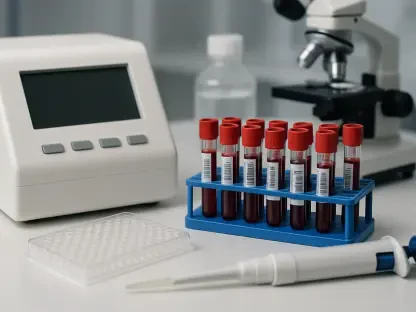In a transformative step for healthcare in South Korea’s Gyeongnam region, Gyeongsang National University Hospital (GNUH) has clinched a significant financial boost through the approval of a major project aimed at enhancing regional medical services. This initiative, spearheaded by Hospital Director Ahn Sung-ki, comes as a response to the pressing need for improved infrastructure to handle severe and emergency cases. Backed by the Ministry of Health and Welfare and supported by substantial funding from Gyeongsangnam-do, the project represents a collaborative push to address medical vulnerabilities and ensure better access to high-quality care. With a budget of 24.6 billion won allocated over the next few years from now until 2027, this endeavor combines national, provincial, and institutional resources in a unified effort. The investment highlights a growing recognition of the critical role that robust healthcare systems play in safeguarding community well-being and reducing disparities in medical access across different regions.
Elevating Critical Care and Infrastructure
The core focus of this ambitious project lies in upgrading GNUH’s facilities to better serve patients with critical and complex health needs. A significant portion of the funding will be directed toward expanding and modernizing the hospital’s Intensive Care Unit (ICU), incorporating advanced features such as negative pressure isolation beds to manage infectious diseases effectively. Beyond critical care, the hospital plans to enhance its center for severe eye diseases, aiming to improve treatment outcomes and surgical precision for high-risk cases. These upgrades are designed to position GNUH as a cornerstone of emergency and specialized medical services in the region. By addressing gaps in infrastructure, the hospital seeks to ensure that residents have access to life-saving interventions without the need to travel to distant urban centers. This development not only promises better patient outcomes but also strengthens the overall resilience of the local healthcare system in responding to both routine and unexpected medical challenges.
Pioneering Technology and Regional Collaboration
Another pivotal aspect of this initiative is the integration of cutting-edge technology to revolutionize patient care at GNUH. The introduction of advanced robotic surgery equipment, such as the Da Vinci SP system, marks a leap forward in surgical precision and recovery times, offering patients less invasive options for complex procedures. Alongside technological advancements, the project emphasizes fostering collaboration with local hospitals and training public medical professionals to build a cohesive regional healthcare network. Hospital Director Ahn Sung-ki has underscored the importance of this unified approach, noting that the partnership with Gyeongsangnam-do and national authorities reflects a shared commitment to protecting lives and enhancing safety. By focusing on reducing regional healthcare disparities and responding adeptly to infectious diseases, GNUH aims to cement trust within the community. These efforts, completed with dedication in recent times, set a precedent for how targeted investments and cooperative strategies can transform public health infrastructure for the better.









